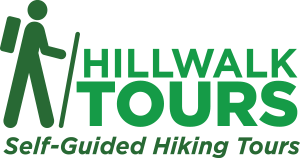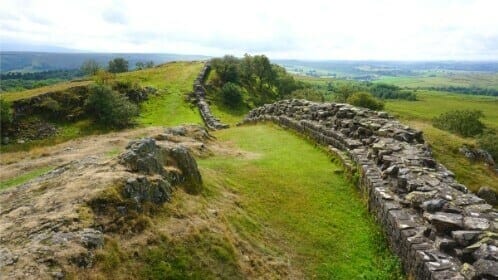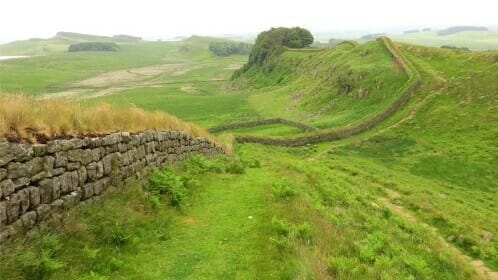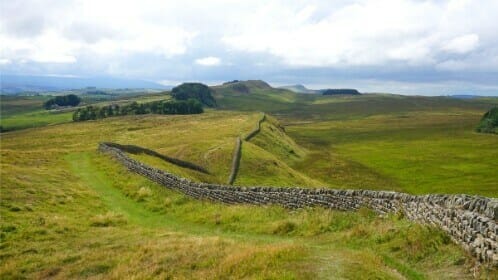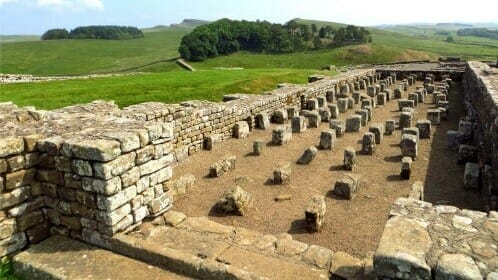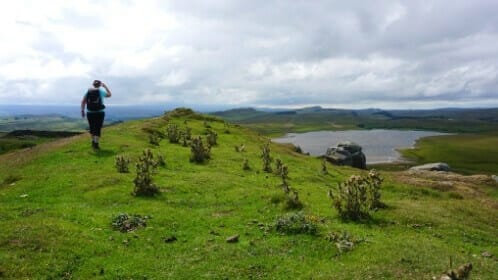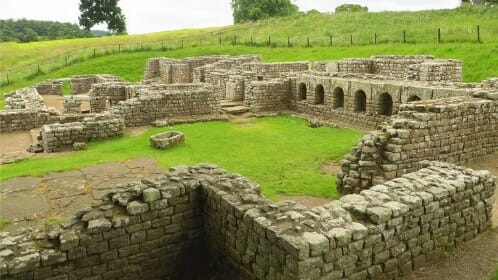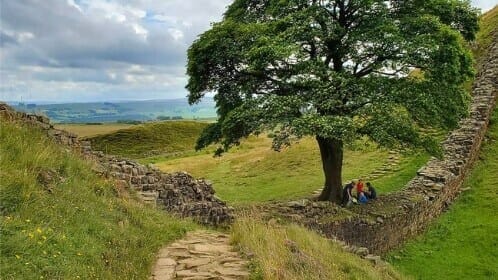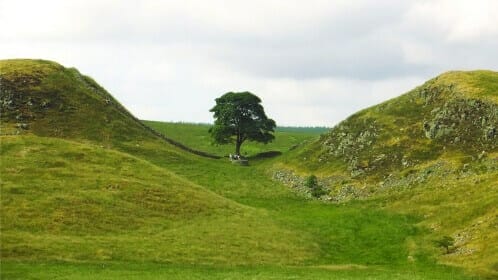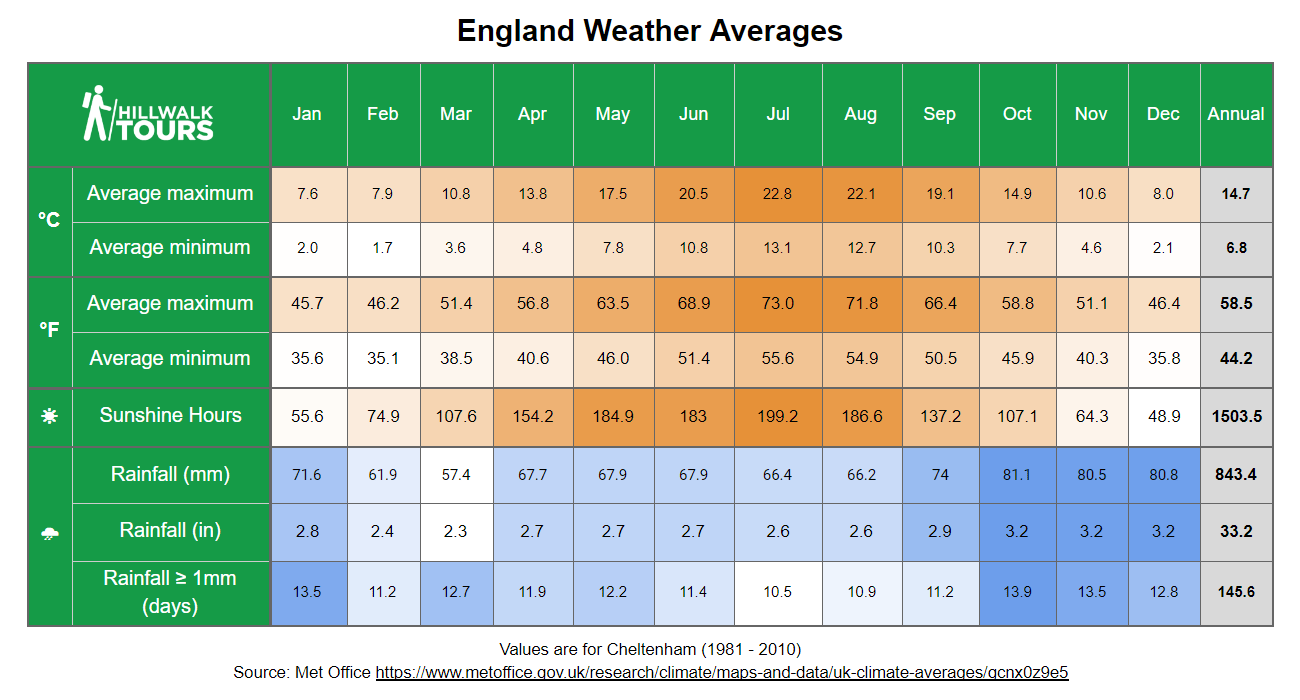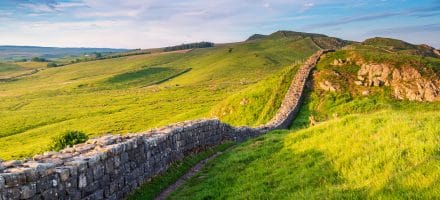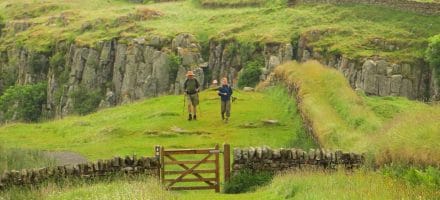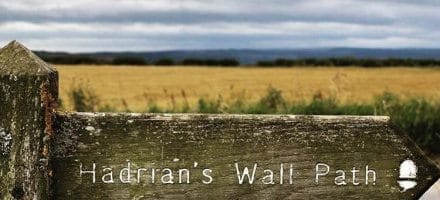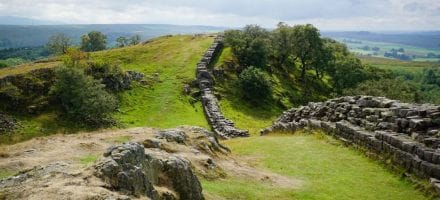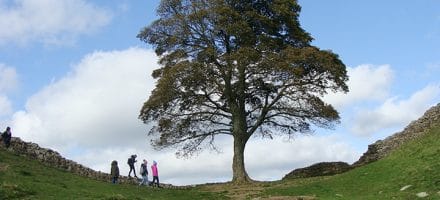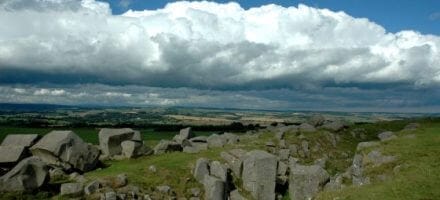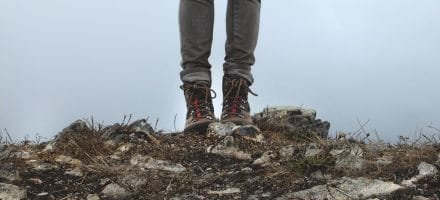The Route
It’s more common to walk Hadrian’s Wall Path starting from Newcastle and heading west. Many walkers feel that it is ‘more natural’ to walk out of a big city into the open country, and it also makes getting to the start of the walk easier due to the better transport connections to Newcastle. Furthermore, the scenery improves the further west you go – up to a point – and the turrets and milecastles are also numbered from east to west as that is the direction in which the Romans built the Wall.
Departing from Newcastle, near the North Sea, the trail follows mostly railway tracks and footpaths to Newburn. From here, it follows river-side tracks for a small while, before heading away from the river to Heddon-on-the Wall. The route then follows the old Military Road, built on top of the Wall, through a pastoral landscape.
More and more remains of Hadrian’s Wall and its forts, towers and castles become visible as the trail follows the line of the Wall west. The route soon passes the old Roman Portgate, near Corbridge, and then leads on to Chollerford with its Roman Fort of Chesters. From here the trail soon rises to follow the tops of the Northumberland Crags with better-preserved Roman remains.
From Housesteads, it moves on to Once Brewed and then to the lovely village of Gilsland. The trail follows the Wall through a more level landscape via Newtown to the ancient city of Carlisle. Following the River Eden and then moving through the flat landscape along the Solway Firth the route soon reaches Bowness-on-Solway on the Irish Sea.
Terrain Overview
The walking on this trail is relatively easy along footpaths, cycle lanes, well-maintained paths and tracks through fields and on good paths along the top of the Northumberland Crags. Though sometimes muddy in places, there is very little rugged or very wet ground.
There are some minor climbs and a little undulating terrain in the central section but for much of its length the path is more or less flat. The total aggregate ascent is approximately 2,000m over the entire route and the highest point is just 345 metres above sea level.
Elevation Profile

